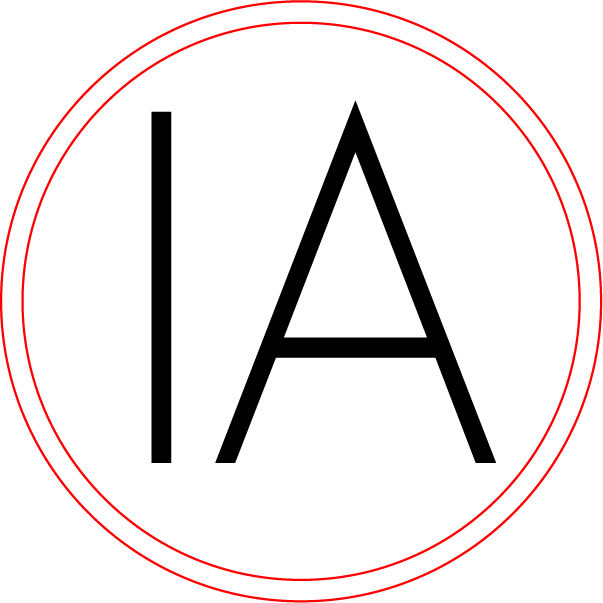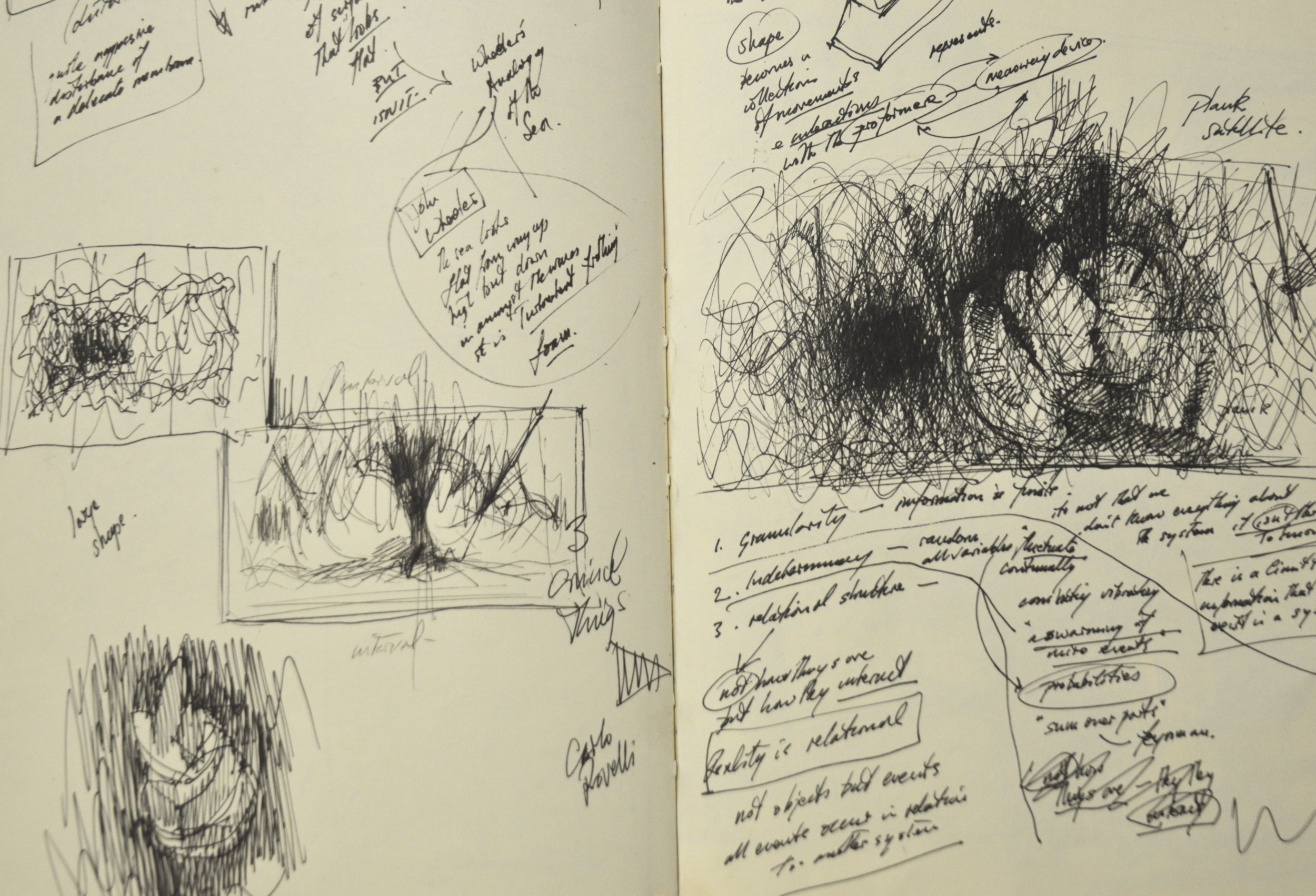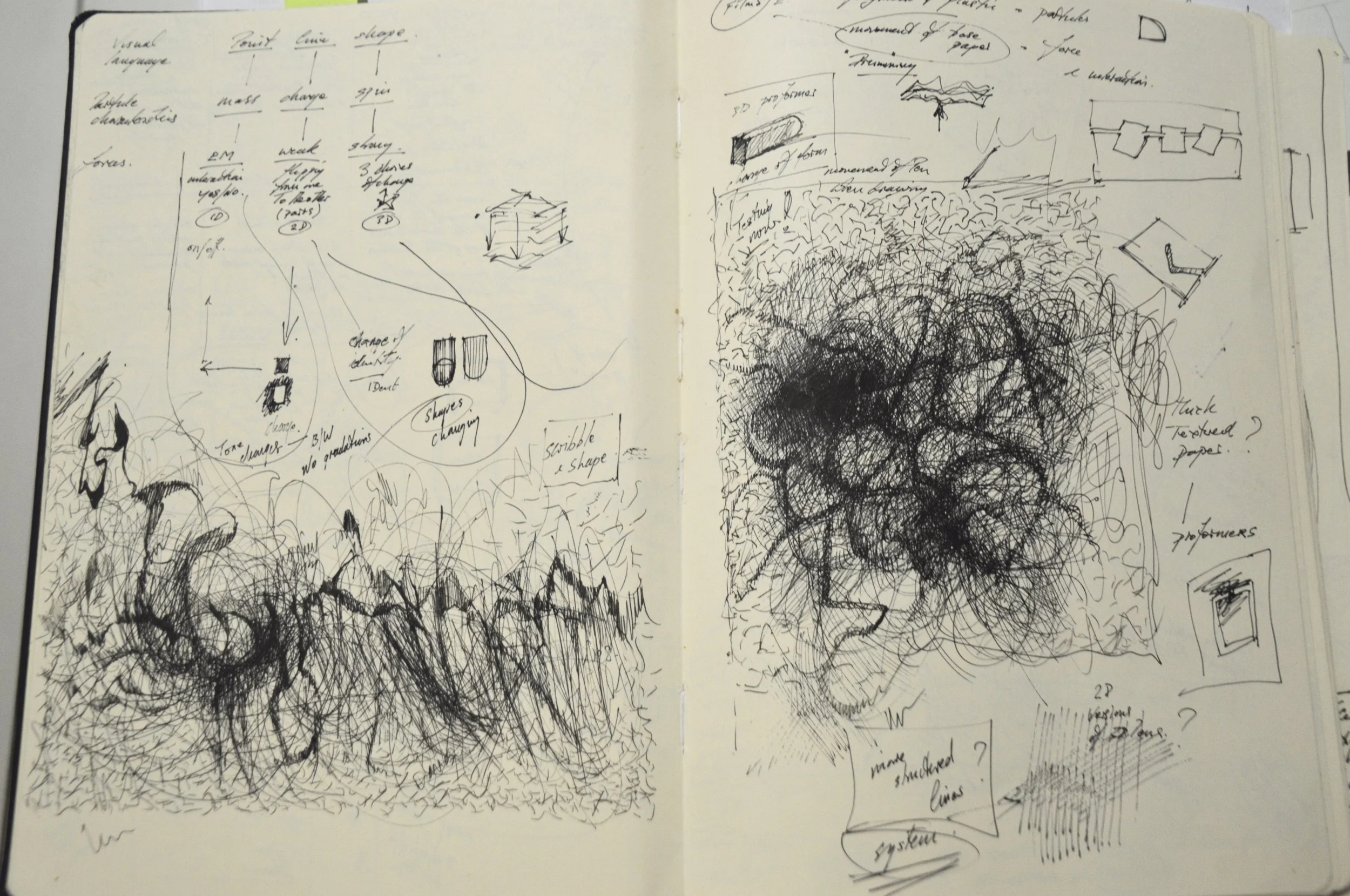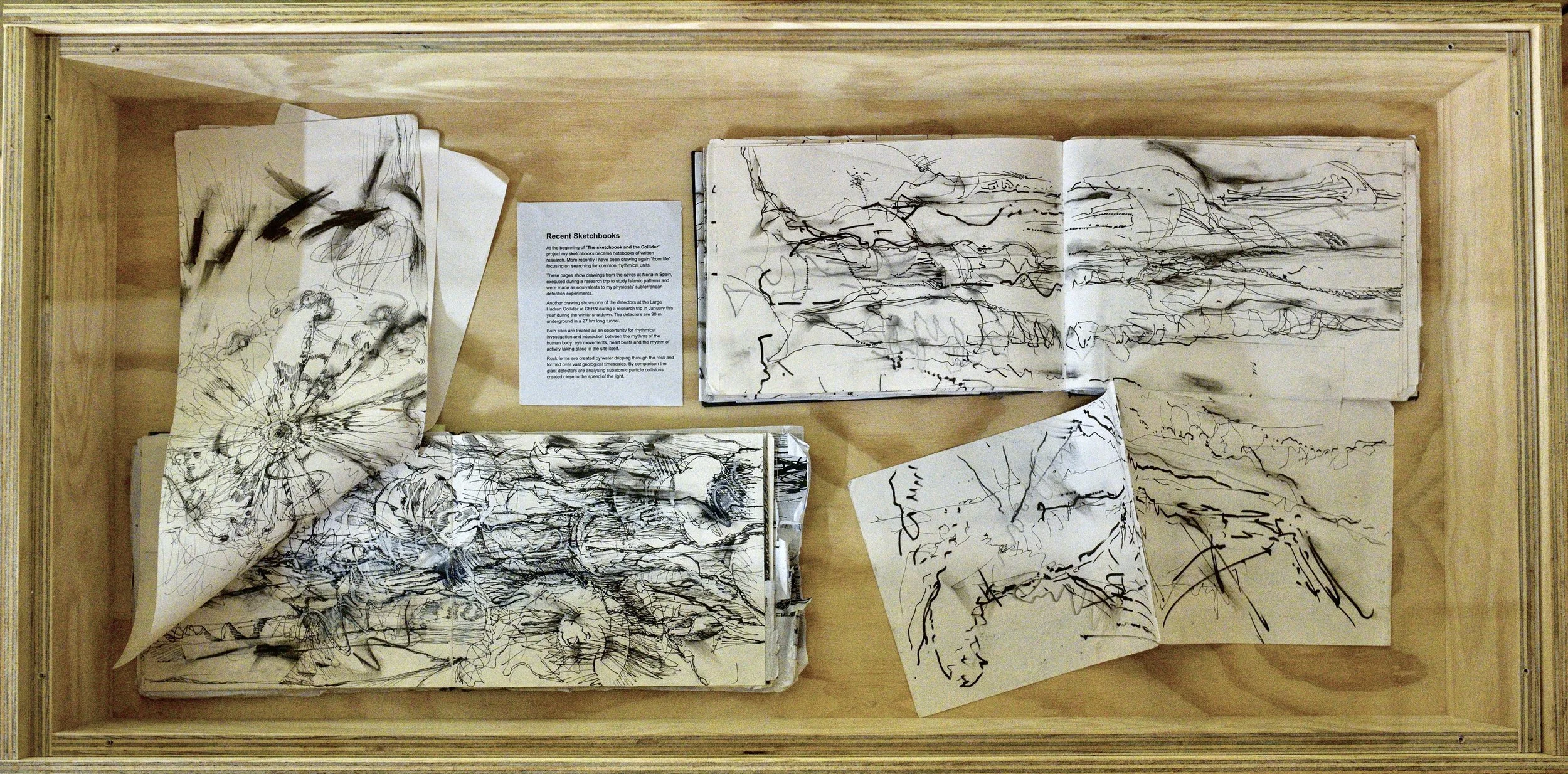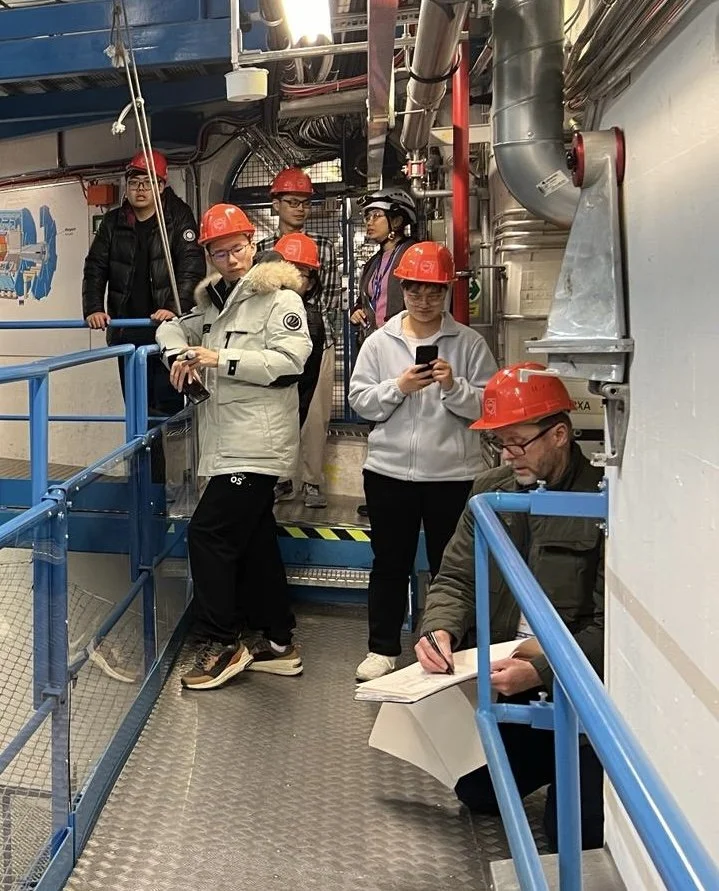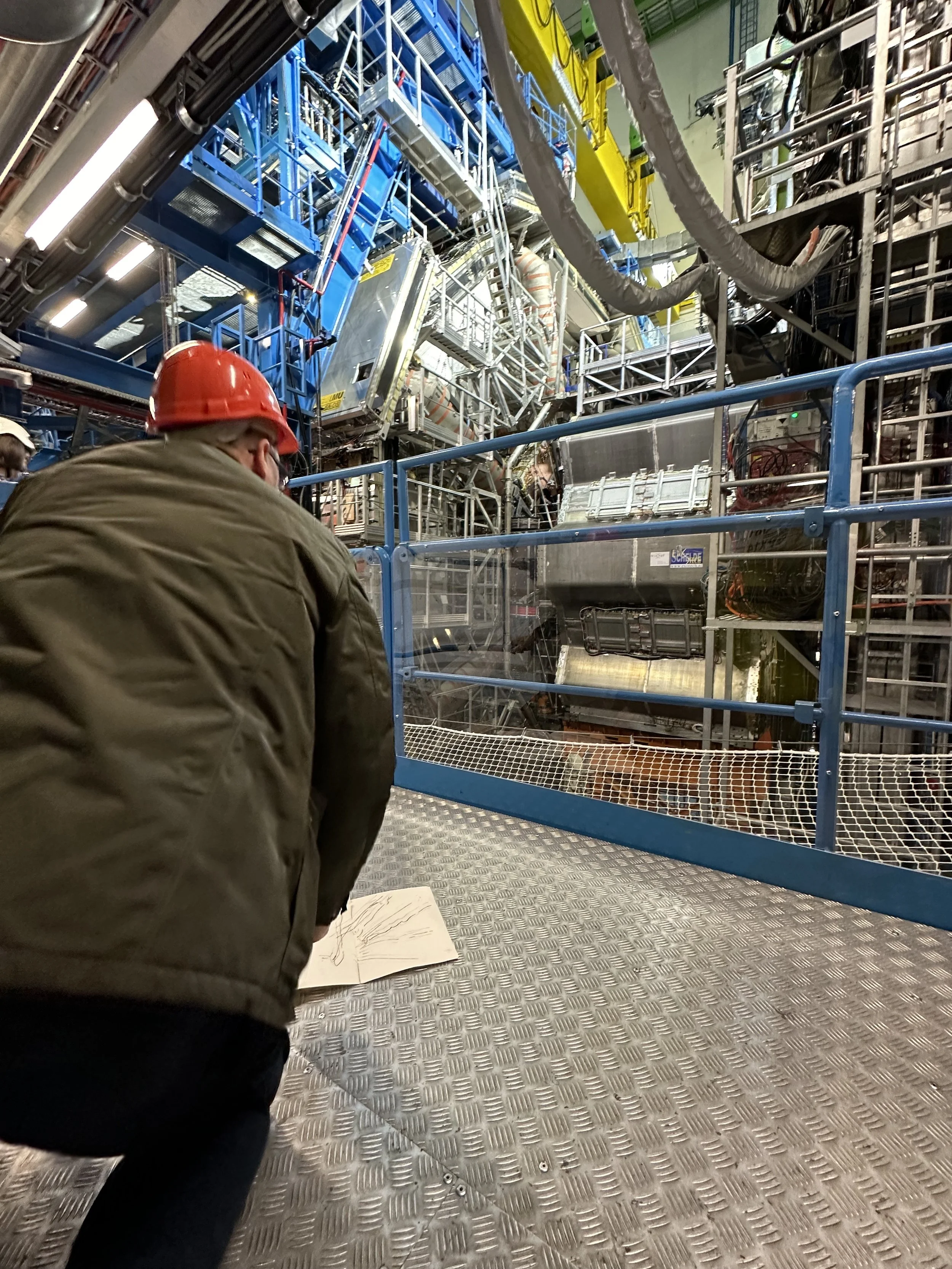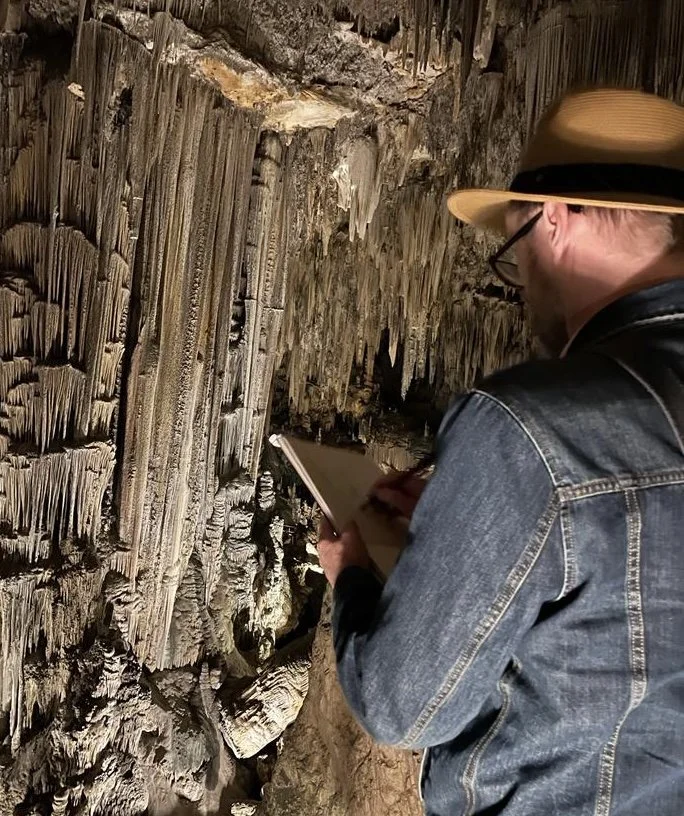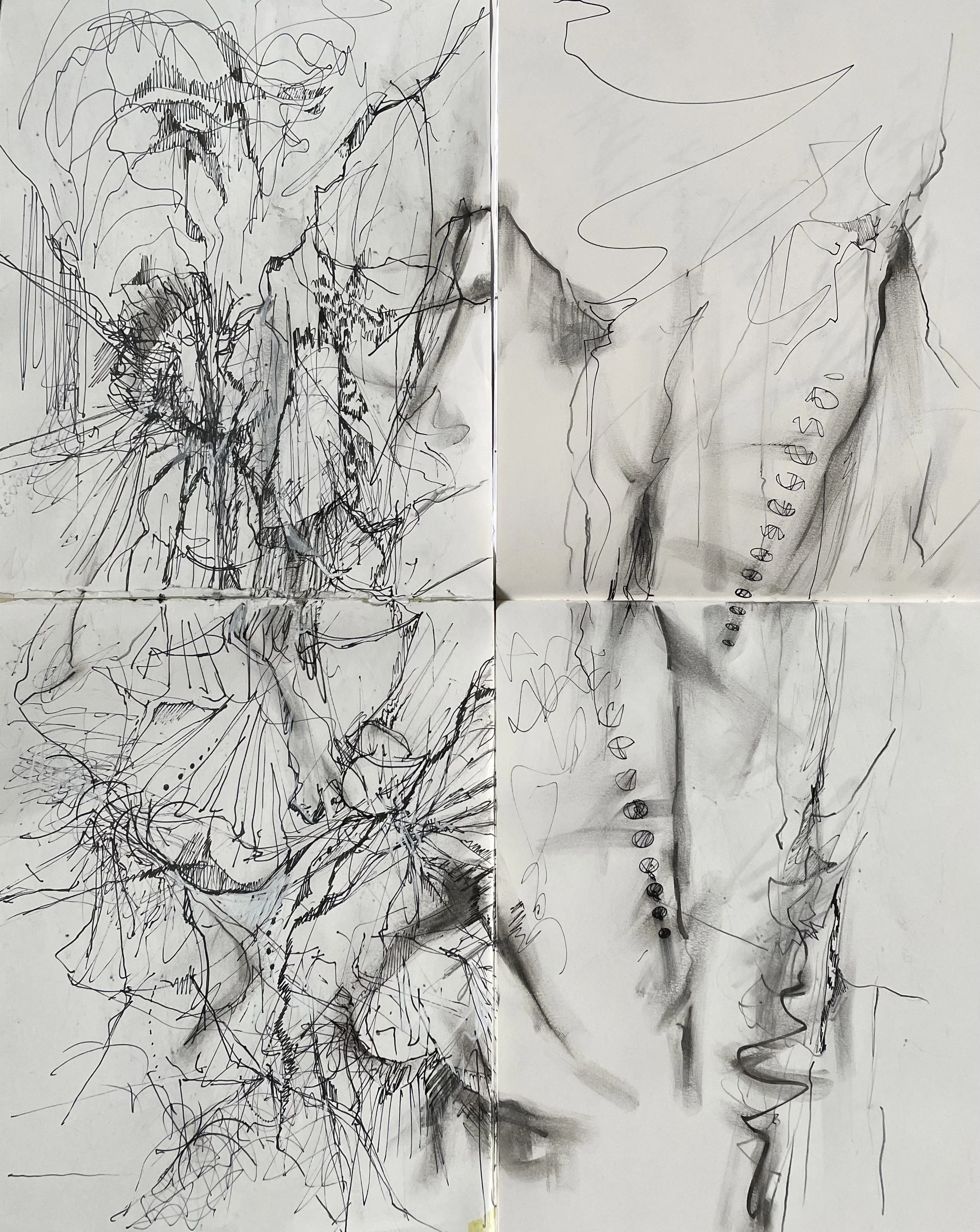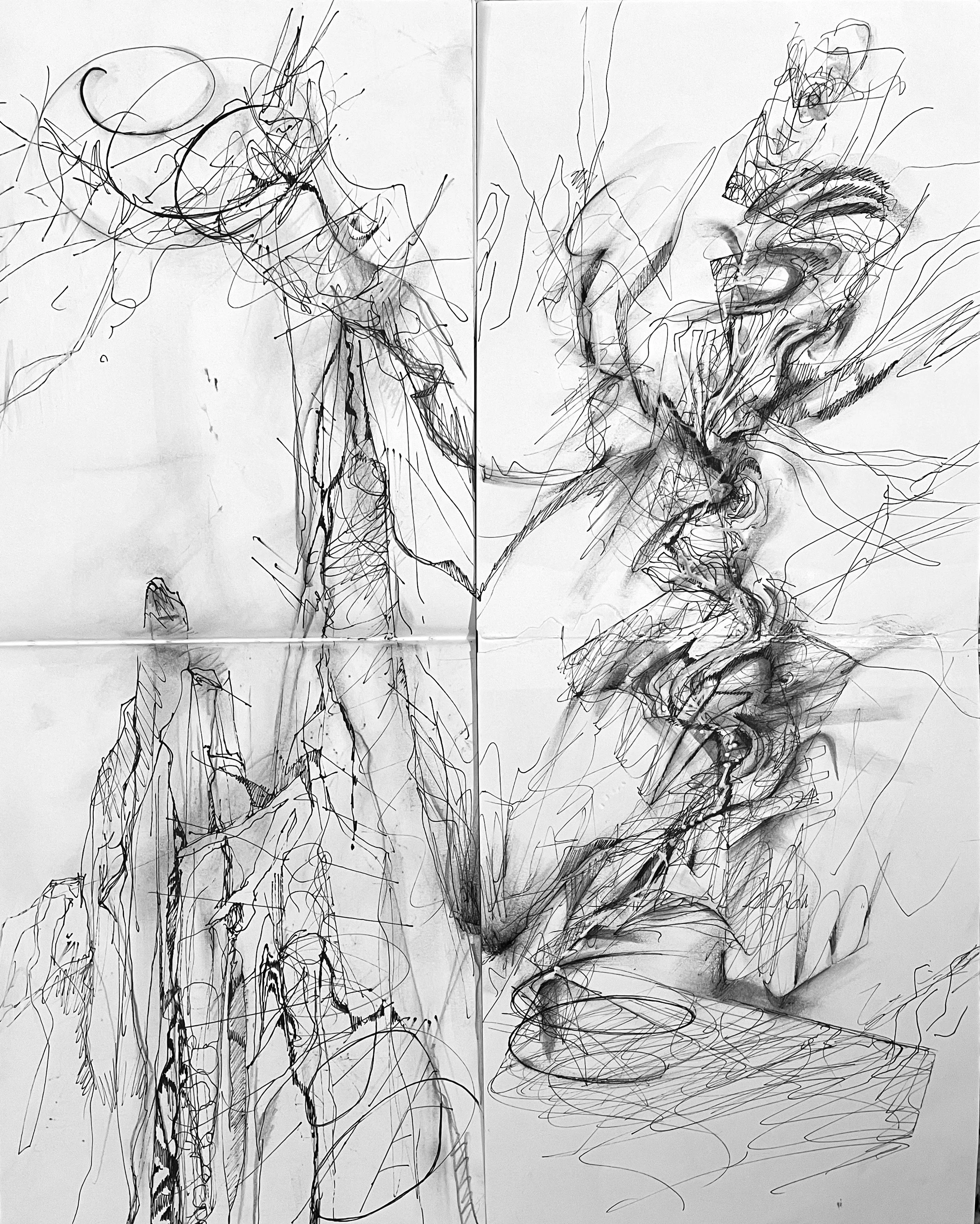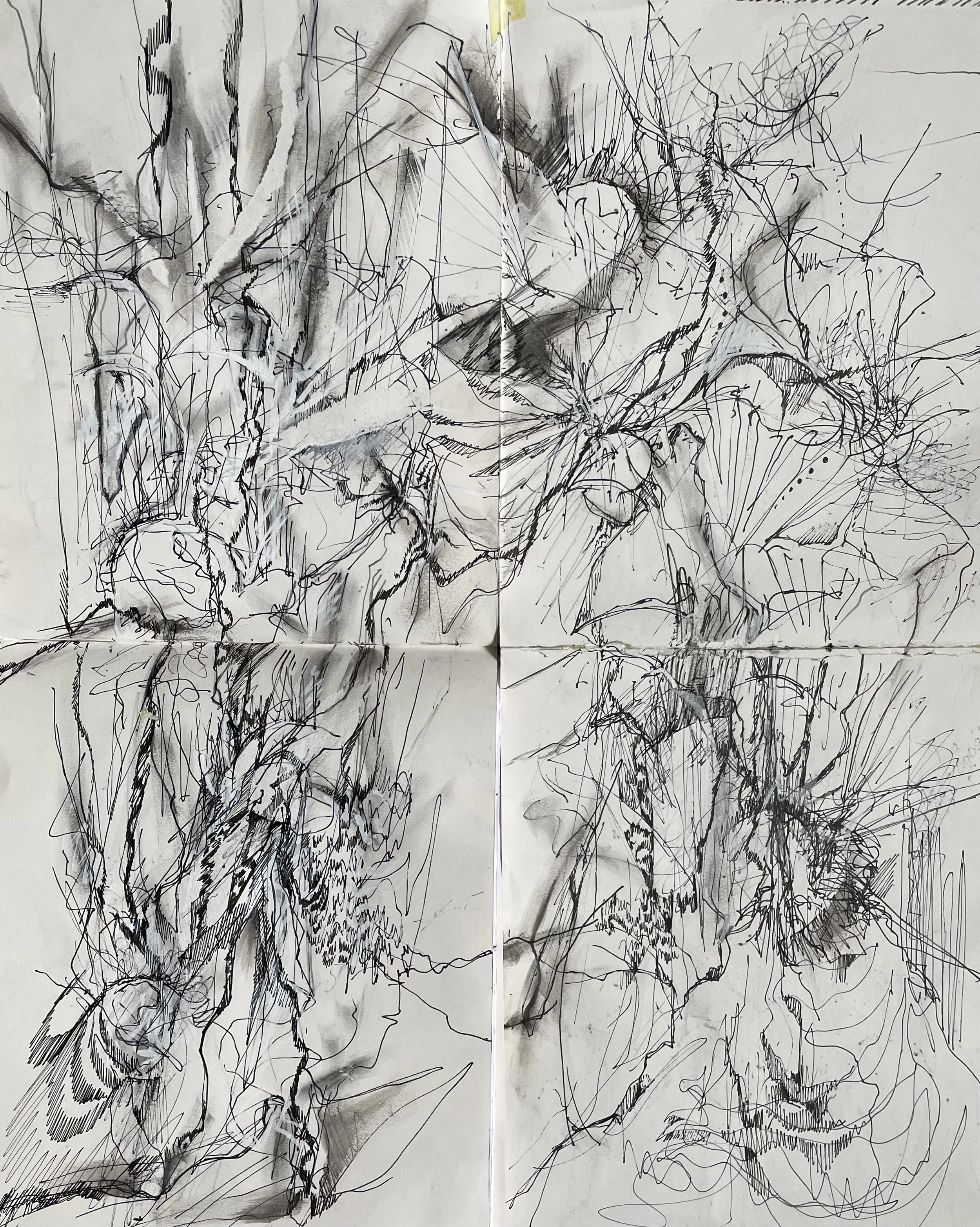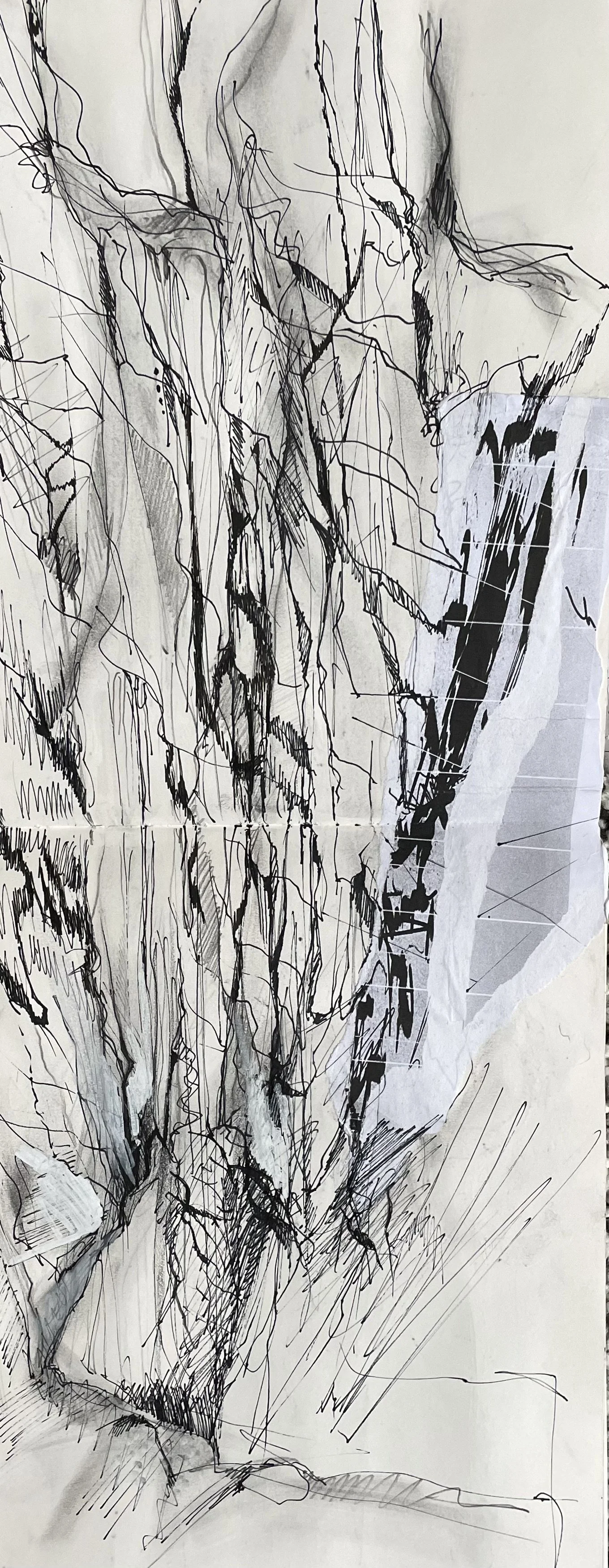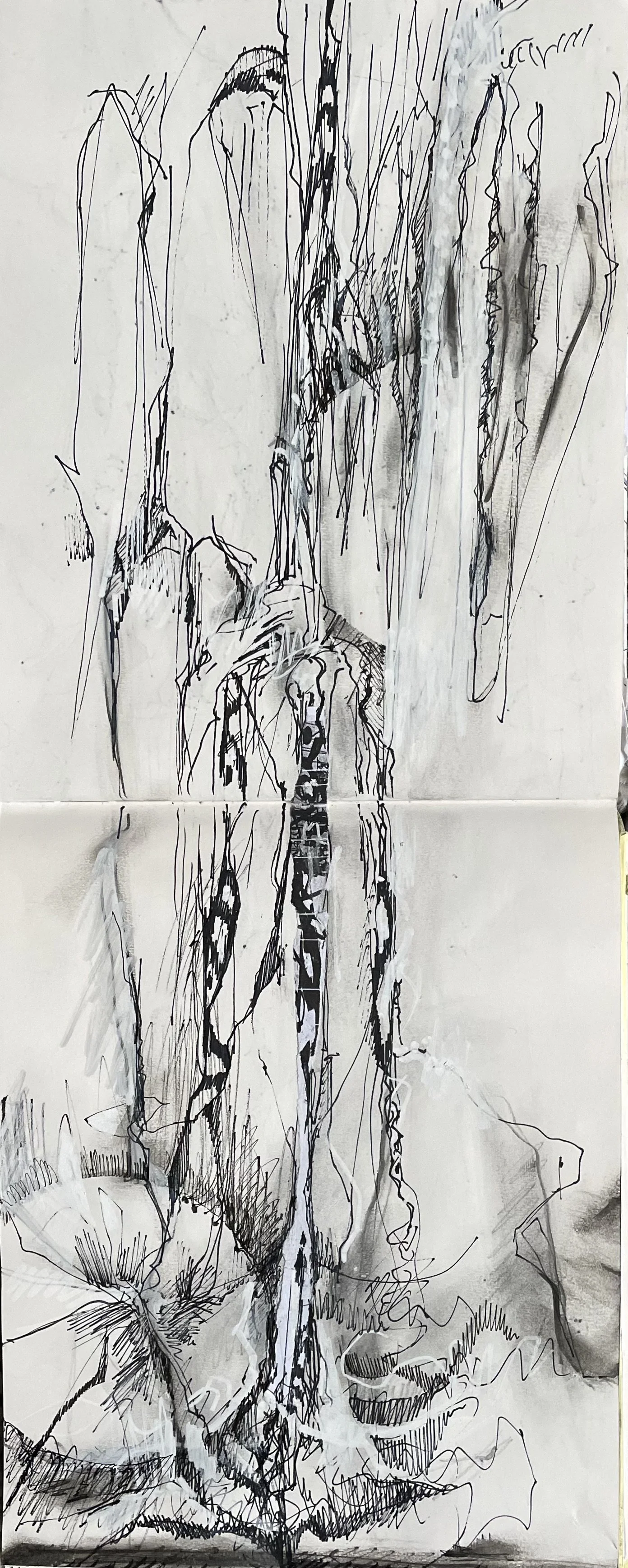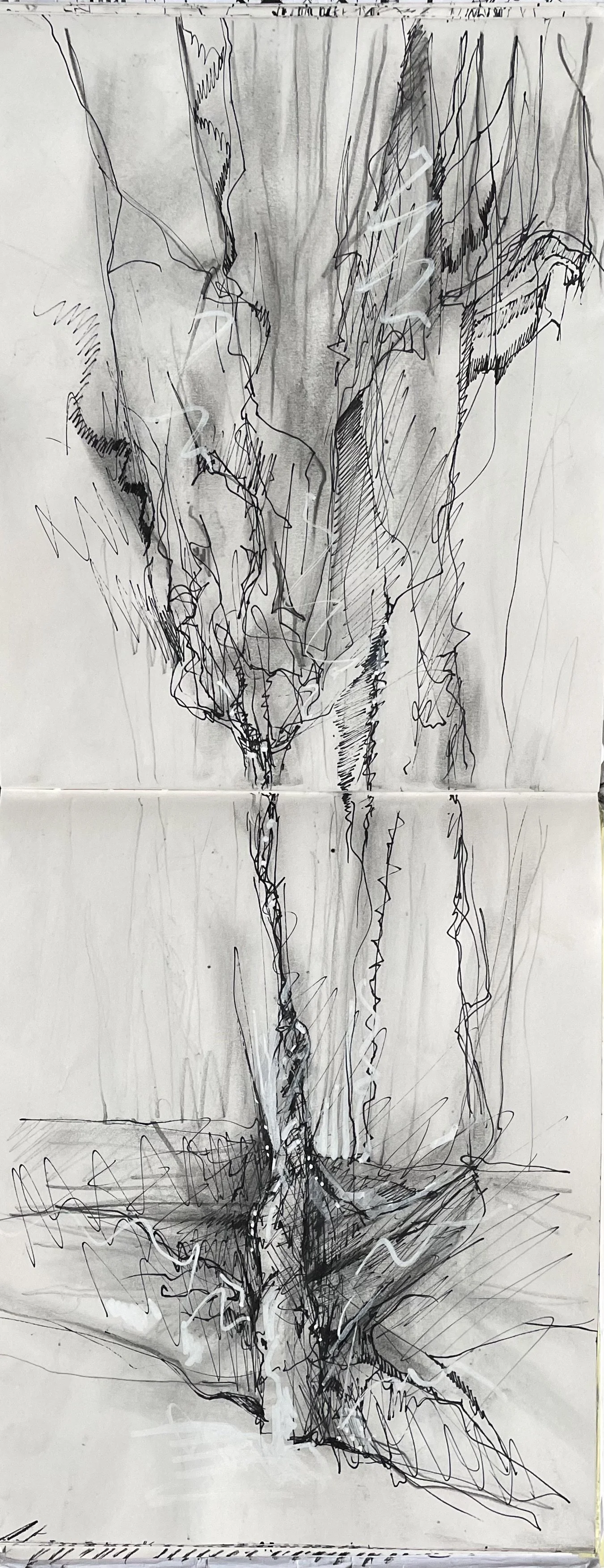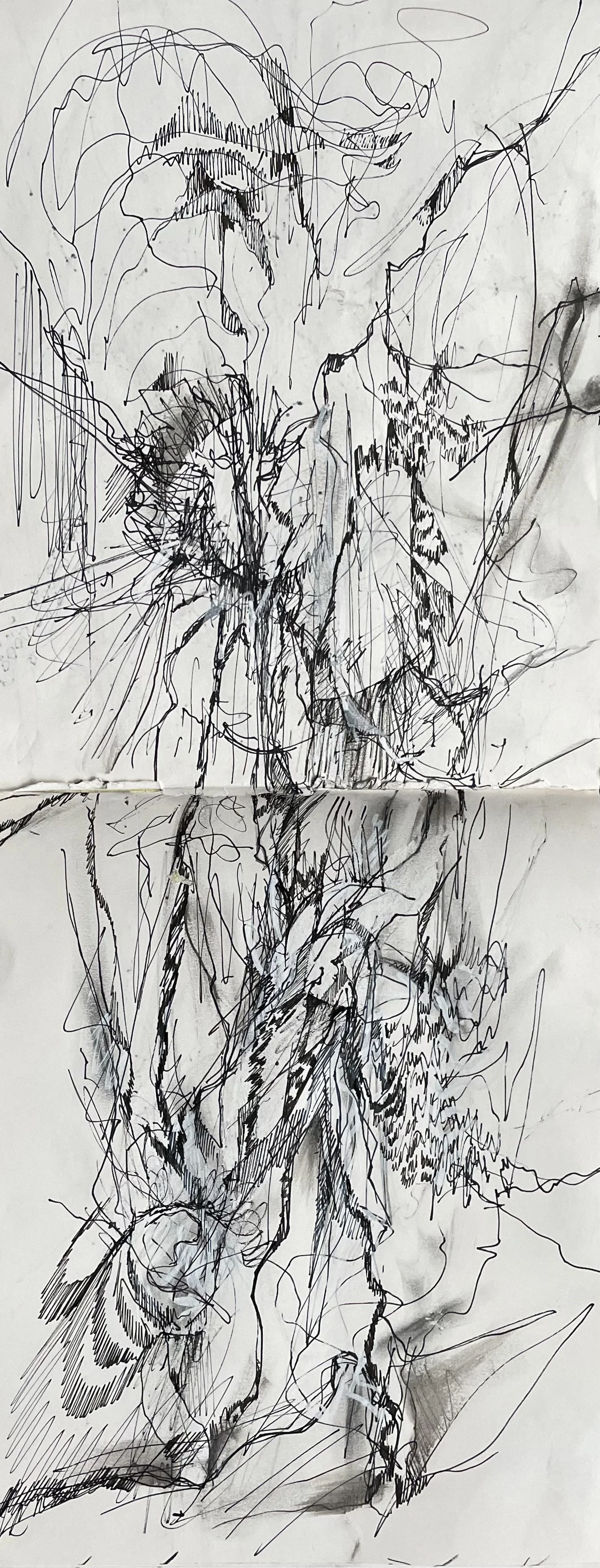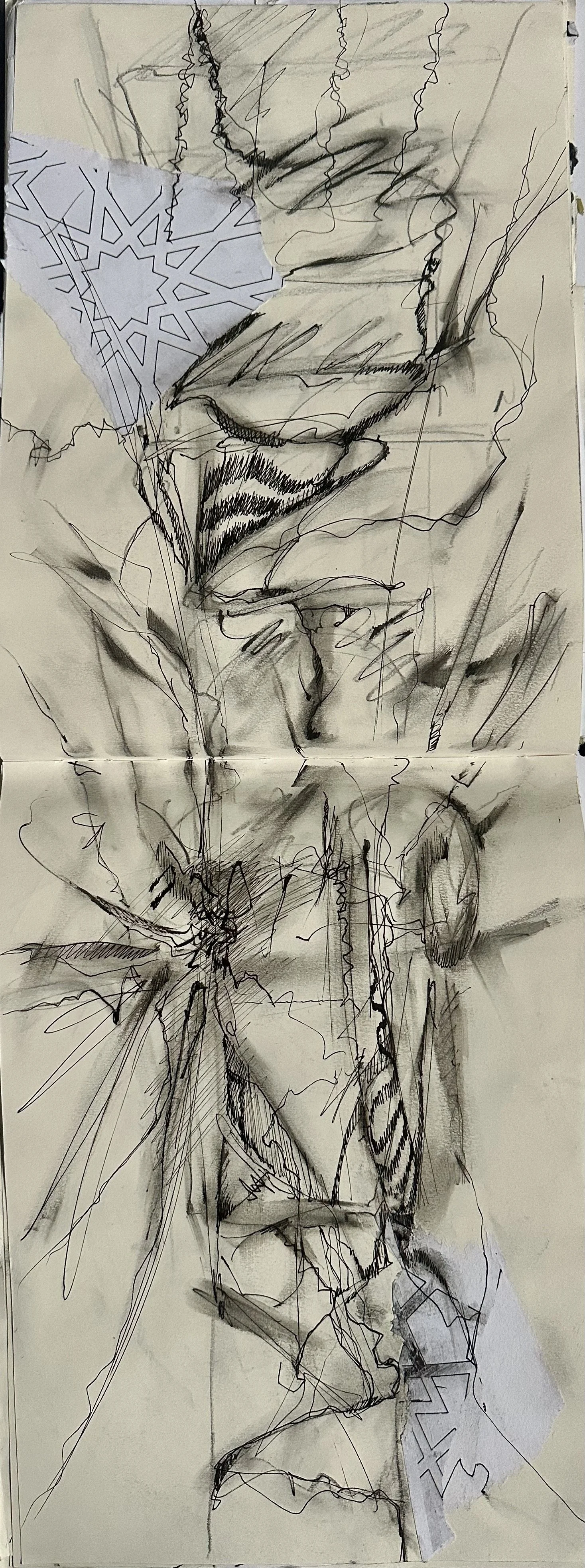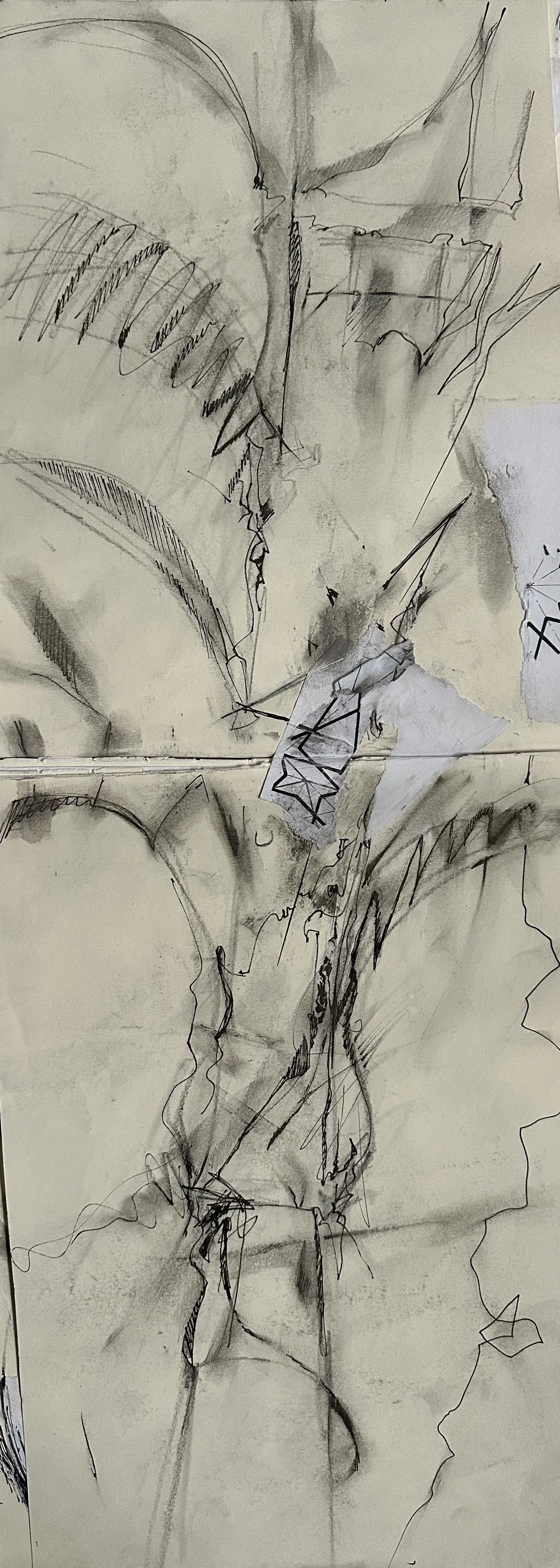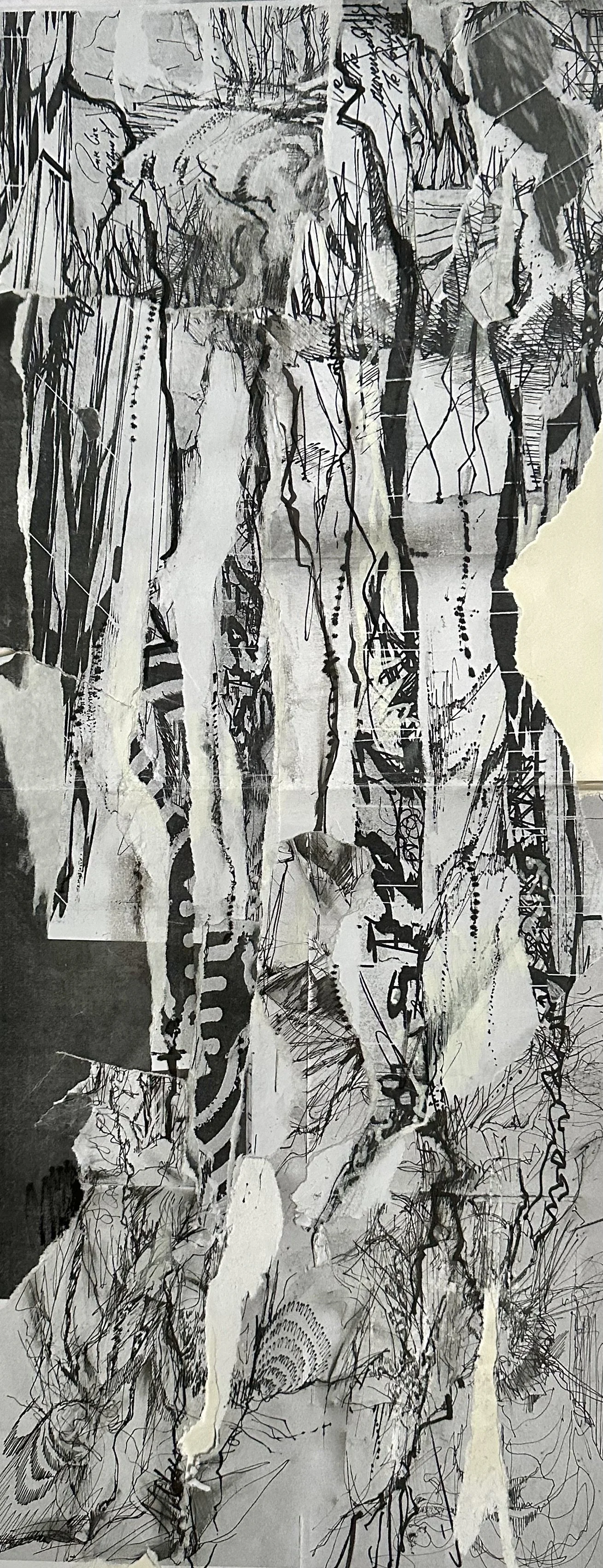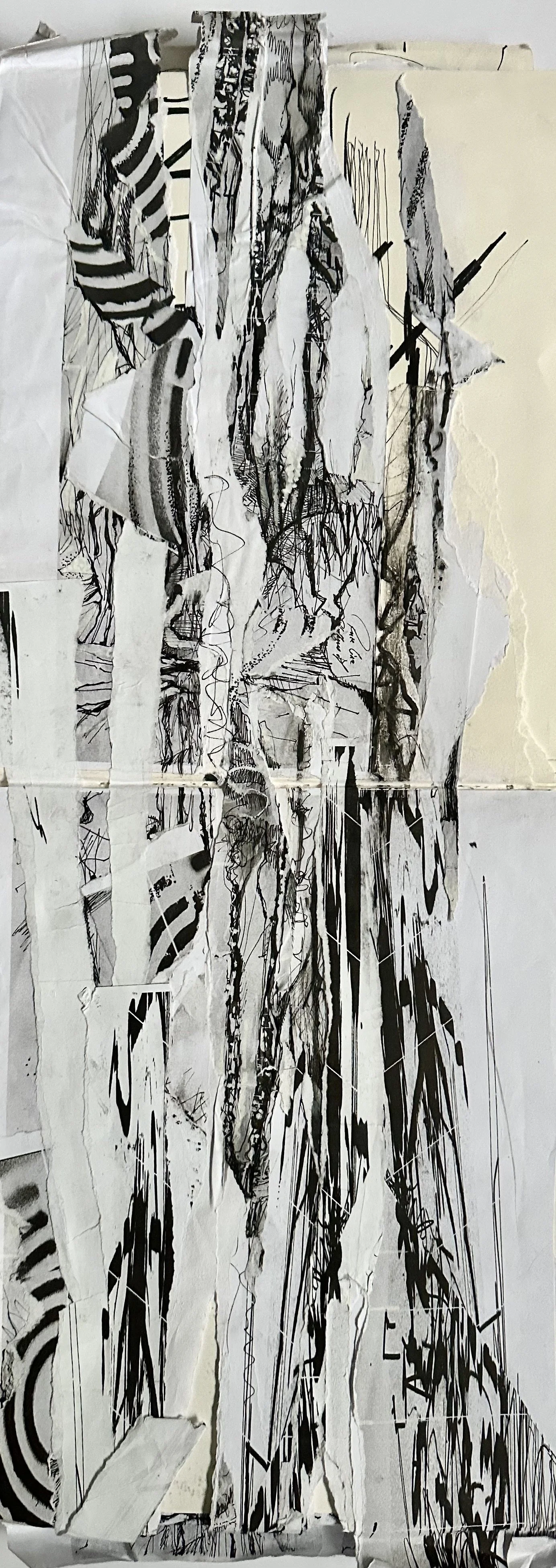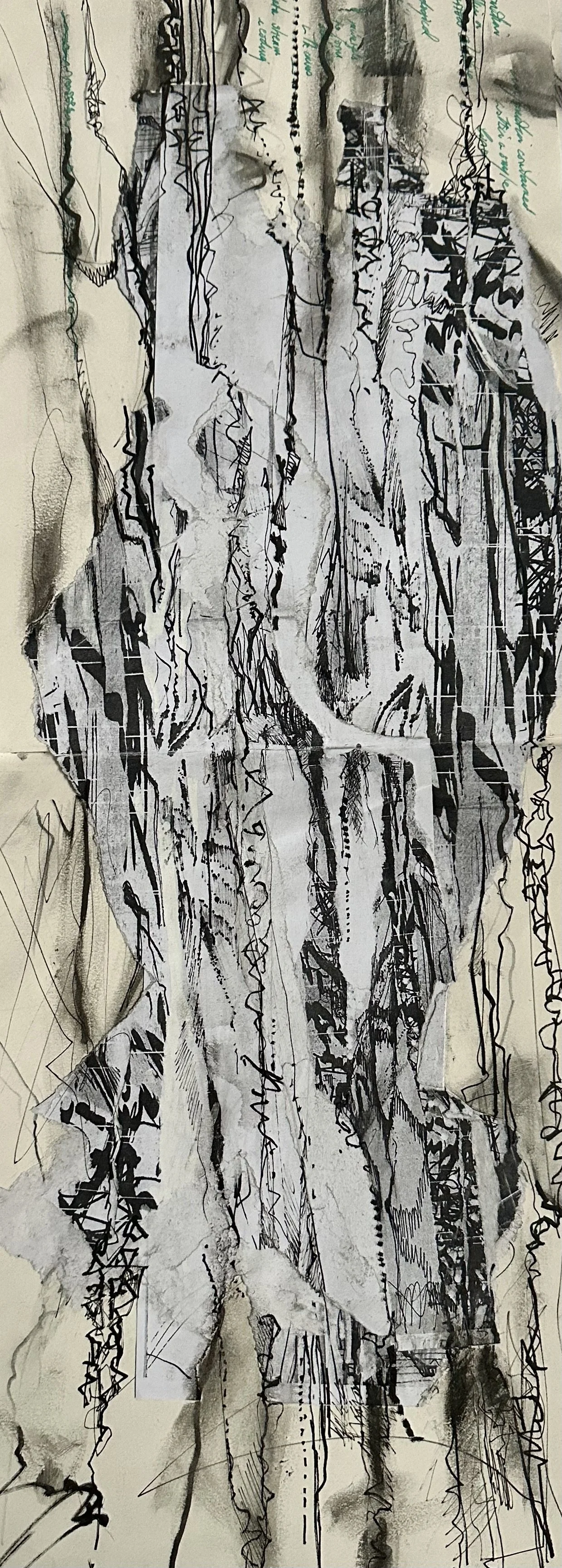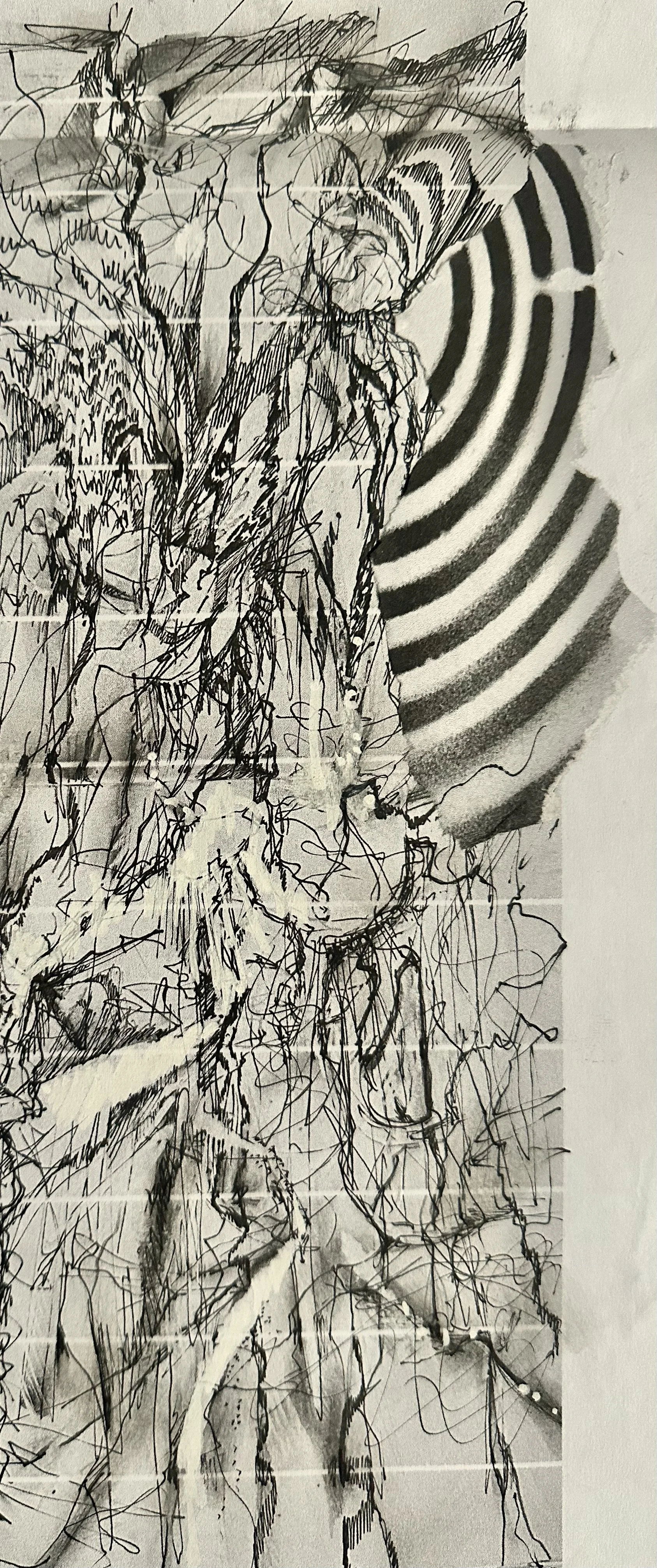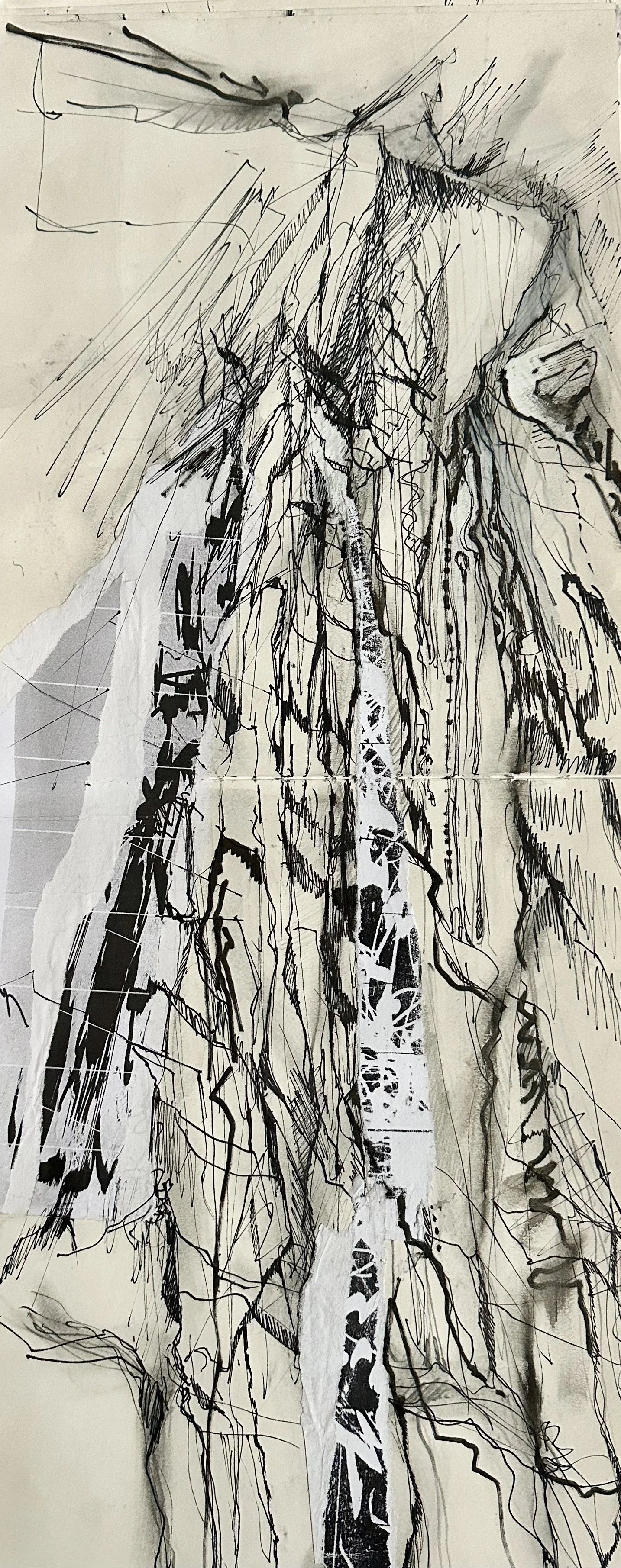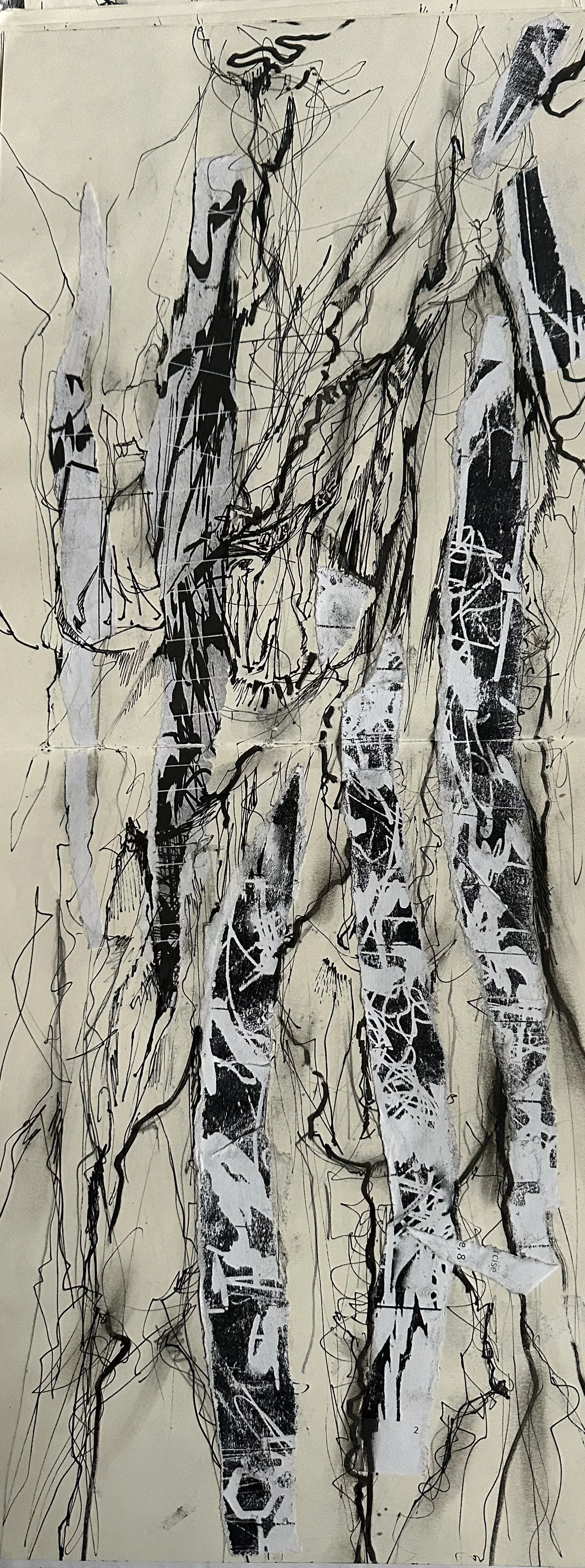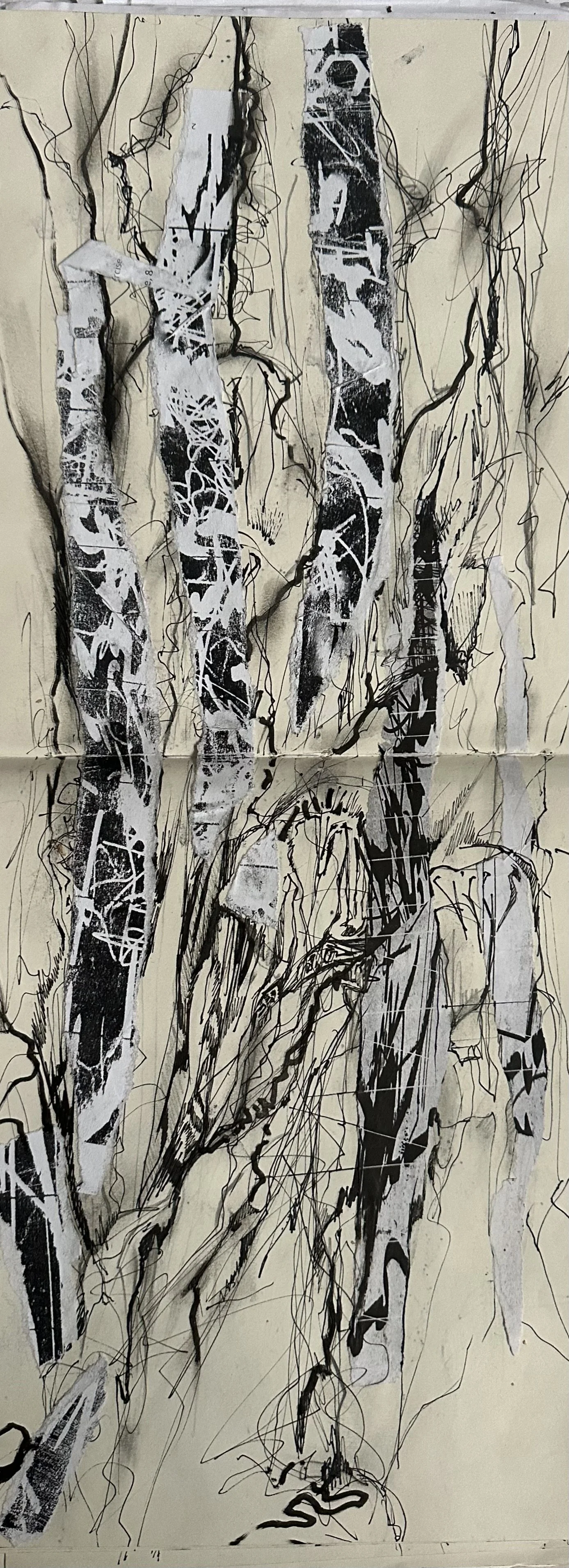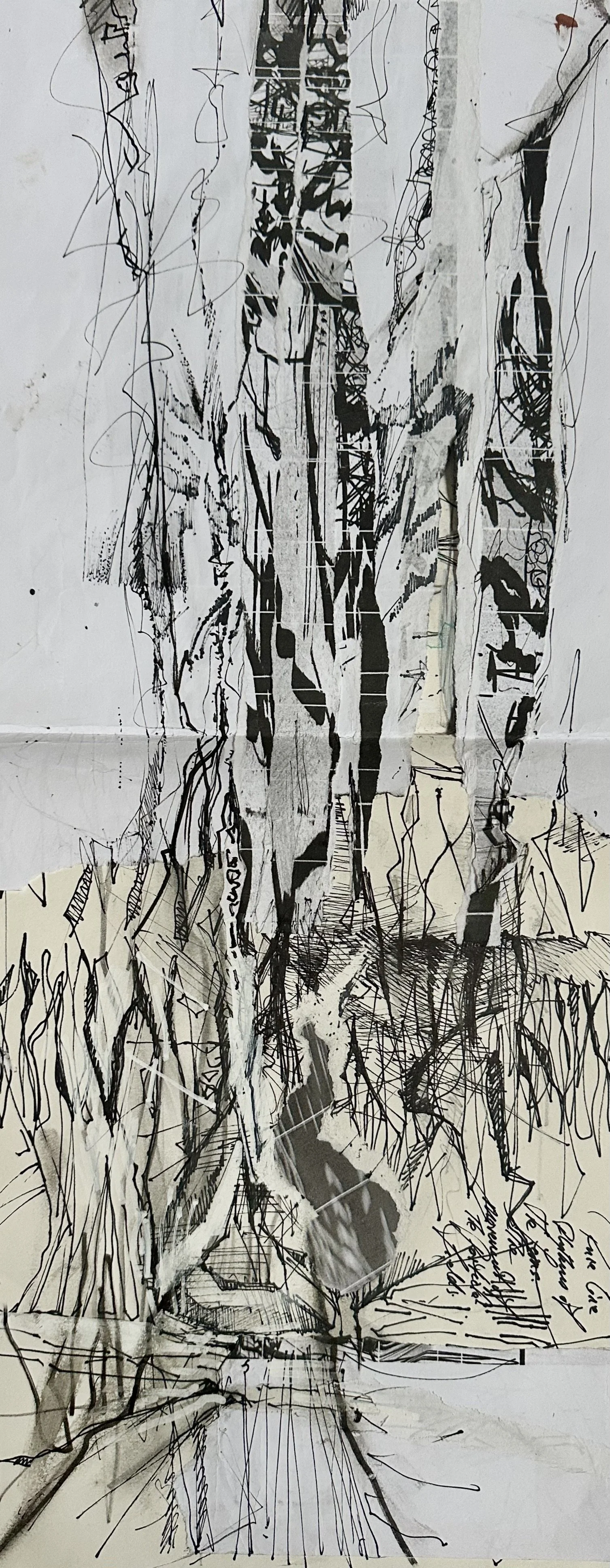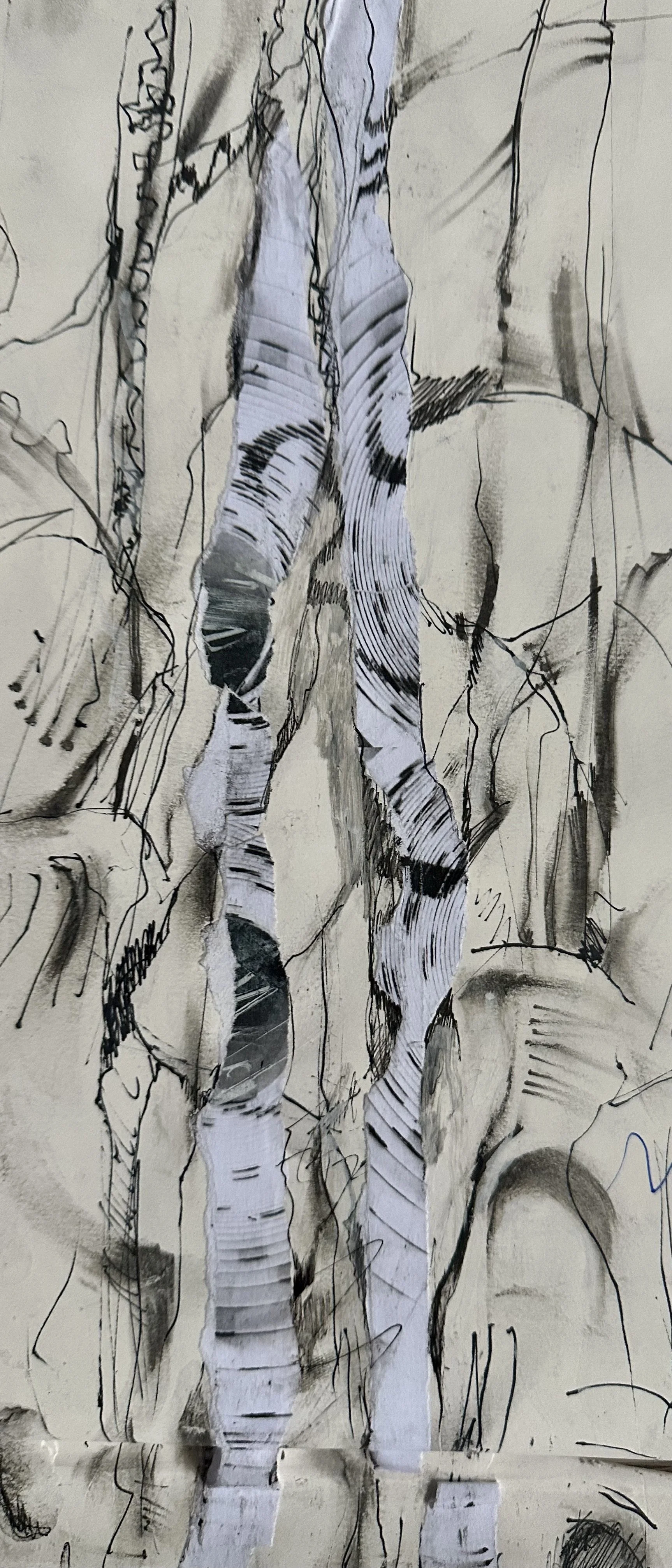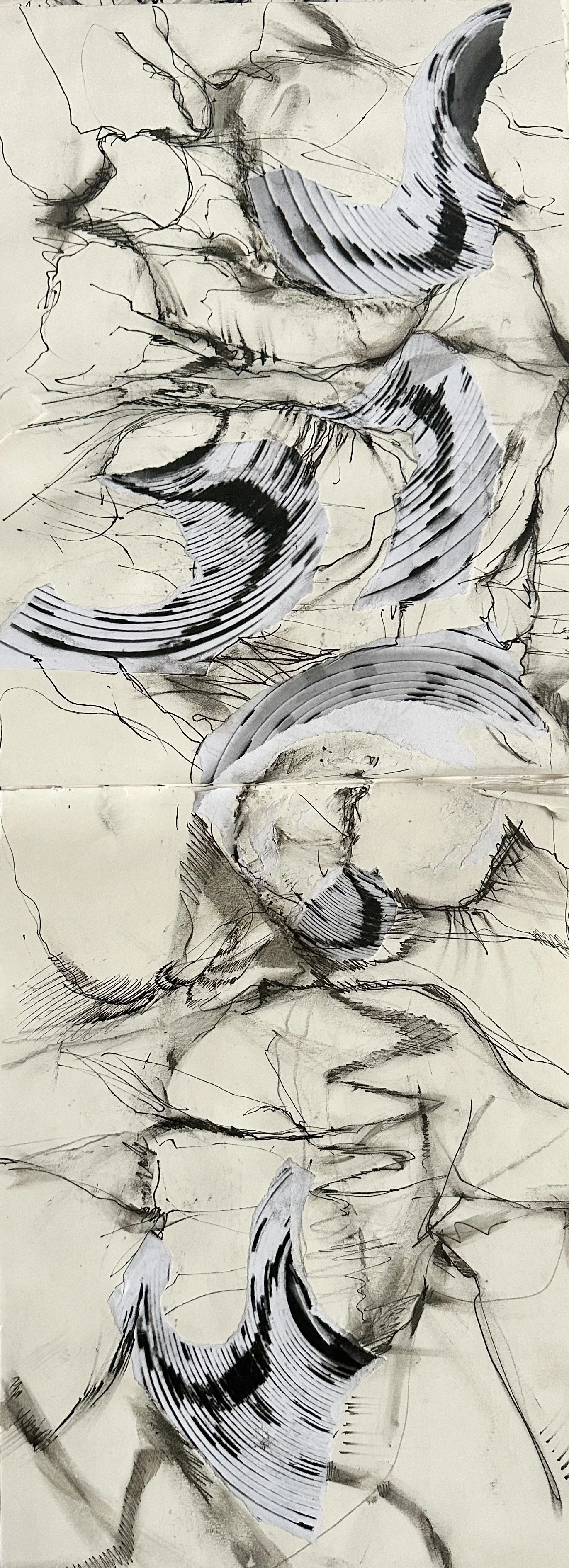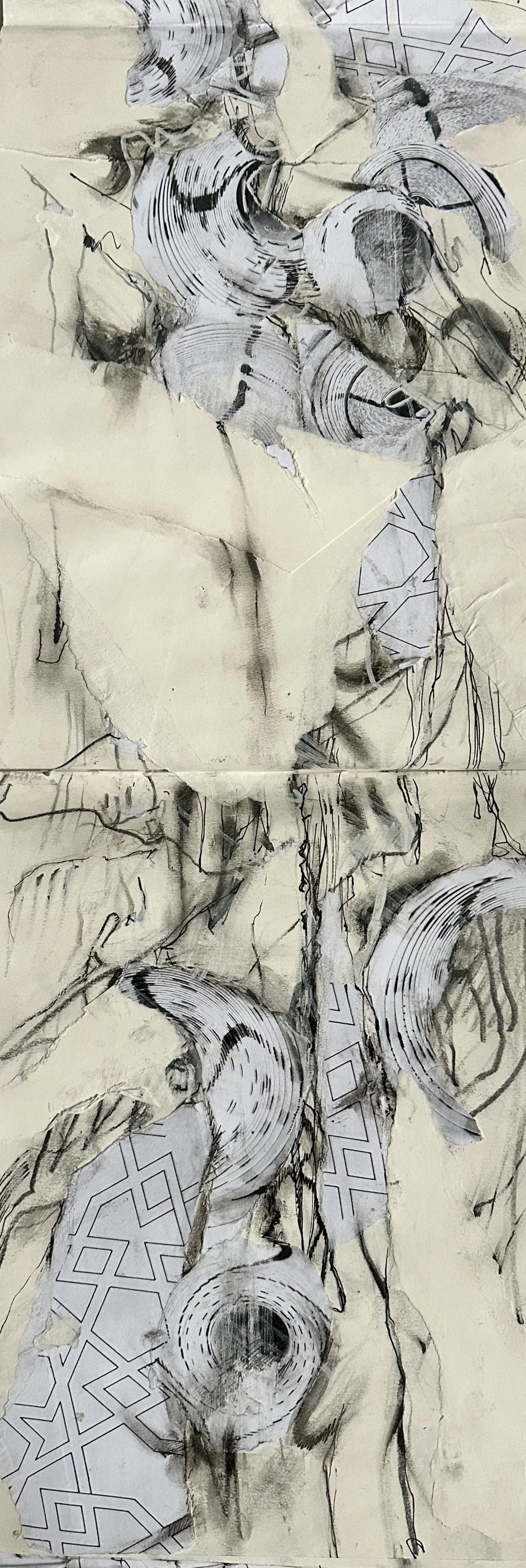SKETCHBOOKS
Recent Sketchbooks
At the beginning of “The sketchbook and the Collider” project my sketchbooks became notebooks of written research. More recently I have been drawing again “from life” focusing on searching for common rhythmical units.
These pages show drawings from the caves at Nerja in Spain, executed during a research trip to study Islamic patterns and were made as equivalents to my physicists’ subterranean detection experiments.
Another drawing shows one of the detectors at the Large Hadron Collider at CERN during a research trip in January this year during the winter shutdown. The detectors are 90 m underground in a 27 km long tunnel.
Both sites are treated as an opportunity for rhythmical investigation and interaction between the rhythms of the human body: eye movements, heart beats and the rhythm of activity taking place in the site itself.
Rock forms are created by water dripping through the rock and formed over vast geological timescales. By comparison the giant detectors are analysing subatomic particle collisions created close to the speed of the light.
Entangled sites.
Collage became important during these studies as initially I interpreted the hanging rock structures as “lines of code,” long thin forms that contained information built up over time that could be decoded by geologists. This accumulation of “stuff” felt collage-like.
I tore thin strips from previous drawings and photocopies, lines of incomplete information that were ripped from a complete image, but which now had only partial references embedded within them.
I realised the collage nature of other recent drawing sites where I explored linear rhythm. The LHC at CERN has grown and evolved with different elements being replaced, adapted, and reconfigured with the detectors themselves a “collage” of different detection methods. The Mezquita at Cordoba a collage of cultures with the Spanish and Moorish elements added and removed as conflict raged over the site.
My research is suggesting an underlying “rhythmical choreography” unfolding at all scales from the cosmological, human, microscopic to the subatomic and just as I was looking for this universal rhythm, so it was irrelevant which site I was working at. Drawing started at one location were continued at another! Places became entangled. Drawings started in the caves were torn into strips and became the starting point for a response at one of the detectors at CERN.
These ideas are starting to merge with recent work looking at the disruption of Circadian Rhythms in the brain and its relationship to neuronal network activity. I am particularly struck by the constant interaction of electrical activity between the neurons reminding me of the interaction of the particles of the standard model. Interestingly early sleep deprivation studies were conducted underground in caves to deprive participants of all knowledge of the time of day linking the subterranean detection experiments.
The linear networks of electrical activity firing between neurons and its linear traces in the EEG data printouts have found their place in the diagrammatic choreography of the drawings which are now fusing multiple references.
I now need to bring this research together, its application to cosmological thinking where dark matter links the subatomic and cosmological scales with the microscopic creation of neuronal networks within the human brain and the bodily processes: the circulatory blood flow, the rhythm of breathing and the beating of our hearts.
